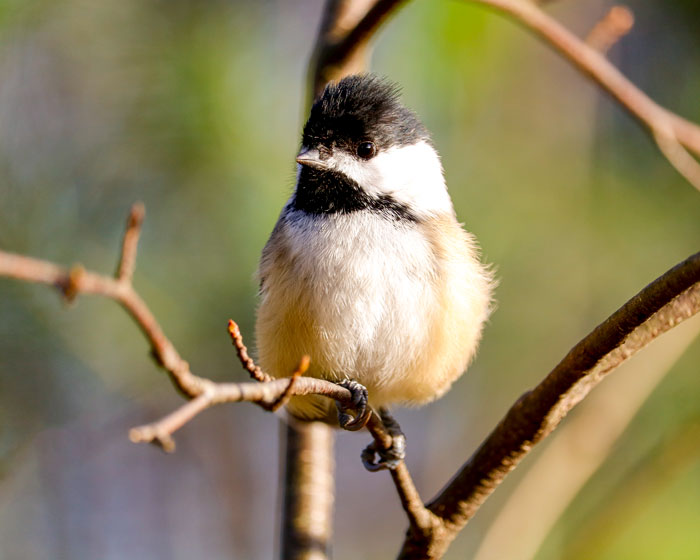
It isn’t very difficult to realize when you hear the distinctive chickadee-dee-dee of the black-capped chickadee Poecile atricapillus, you will soon have the opportunity to catch a glimpse of one of these engaging birds. Usually, after one shows up, several others will soon follow. These birds are curious by nature and it is as though this call by the first chickadee is saying, “Hey guys, look what I found,” and before you know it, you are soon to be in the presence of several of these charming and delightful birds.
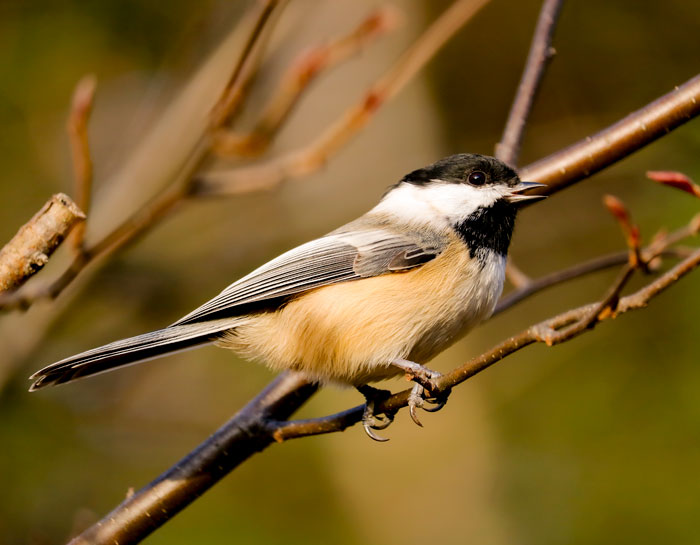
Since moving to the beautiful state of Maine, I have been fortunate enough to explore the natural world further than I have ever done before. I have also really honed in on my skills as a photographer. I am thoroughly interested in other types of photography, such as landscape, still-life, architecture, and food, but I always find myself drawn back to photographing the avian world. I especially enjoy photographing black-capped chickadees. I spend several hours throughout the seasons observing their behavior and capturing them in their natural habitat. While in college, I majored in biology with a concentration in animal behavior and ornithology. I also studied several types of art and art history. Both of these majors required a great deal of observation and intensive writing. I believe these two aspects of my education have prepared me for my photography skills and blogging pertaining to birds today.
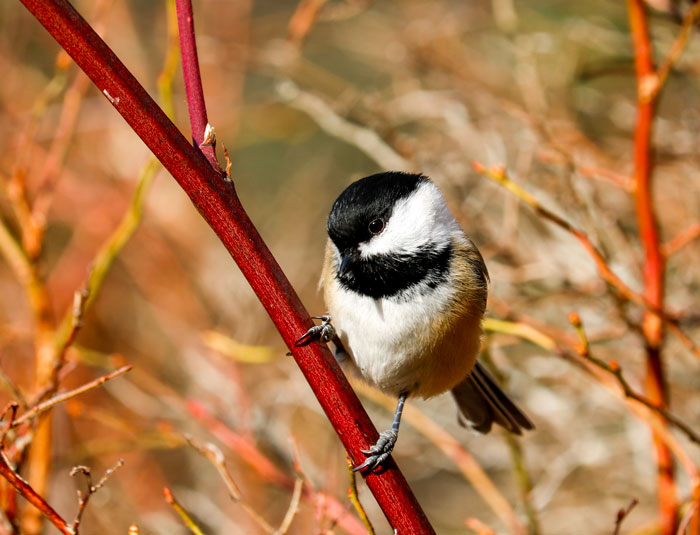
While photographing black-capped chickadees, I not only feel as though I am an observer, but a participant in the small ecosystem that they have created here on my property. These birds are a bold and inquisitive species of songbird, as well as our state bird. They are considered a permanent resident species and can be found in several types of habitats such as deciduous and mixed forests in North America. Habitats include areas with trees or woody shrubs, from woods to residential neighborhoods and parks, and sometimes areas with weedy fields and cattail marshes. Chickadees will frequently nest in birch or alder trees and nesting boxes if provided. They can be found from the state of Alaska through the southern half of Canada as well as far south as the northern half of the U.S. Even though they are considered permanent residents, they will sometimes move south within their range, and even outside of it, during the fall or winter.
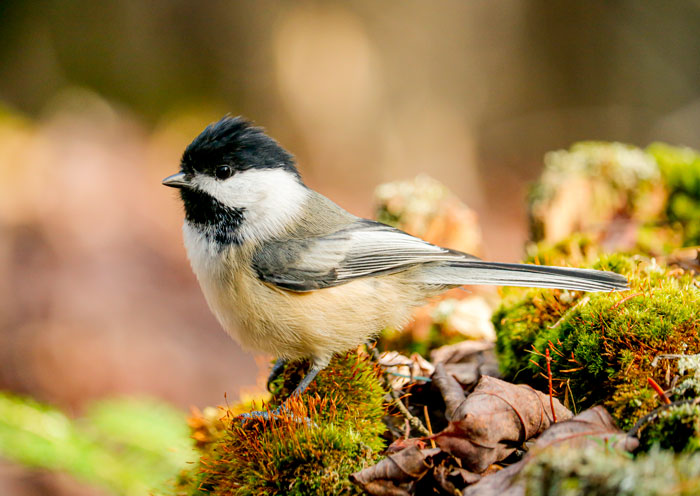
These birds are tiny and considered universally adorable, with a short neck and large head, giving it a globular shape. They have long, narrow tails and short bills. They have a black cap and bib and cheeks that are white. The back is a soft gray, the wing feathers are also gray, edged with white. The underparts are a soft buff color on the sides leading to white beneath. The black cap extends down just below their expression-filled black eyes, often making them difficult to see. Unless that is if you can capture them in optimal lighting.
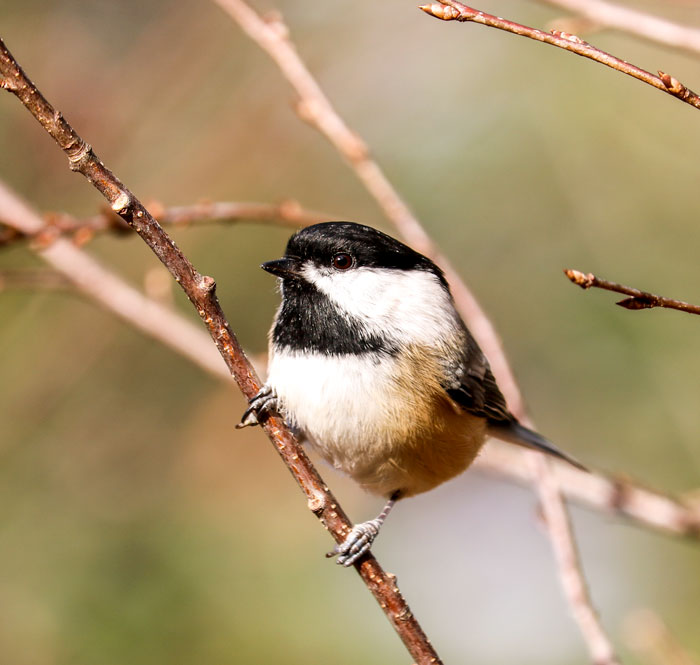
One of my favorite times of the year for observing these birds is during the winter. I will spend several hours getting to learn about their behavior and the hierarchies they form. Within flocks, there have been noted dominance hierarchies. Some chickadees are considered “winter floaters” and don’t belong to a particular flock. These individuals may in fact have a different rank within each flock they choose to spend their time with. Small flocks of these birds liven up the woods as they fly from tree to tree, vocalizing their active and cheery sounds. It has been observed that flocks have several highly complex calls with specific meanings. It is also said they have some of the same characteristics similar to that of human language. The voice of the black-capped chickadee is a clear chick-a-dee-dee-dee or dee-dee-dee. Their song is a clear two or three-note whistle, fee-bee or hey, sweetie. The first note will be higher. The males will begin singing in mid-January and the song will increase in frequency as winter progresses. The females may also sing occasionally. Their contact call is a sharp chik or tsik, often leading into the chick-a-dee call. If threatened by a predator, these birds will make a high-pitched and high-intensity alarm call. When chickadees hear this, they will freeze in position until they hear the “all is clear” chickadee-dee call. These calls are often given by the males.
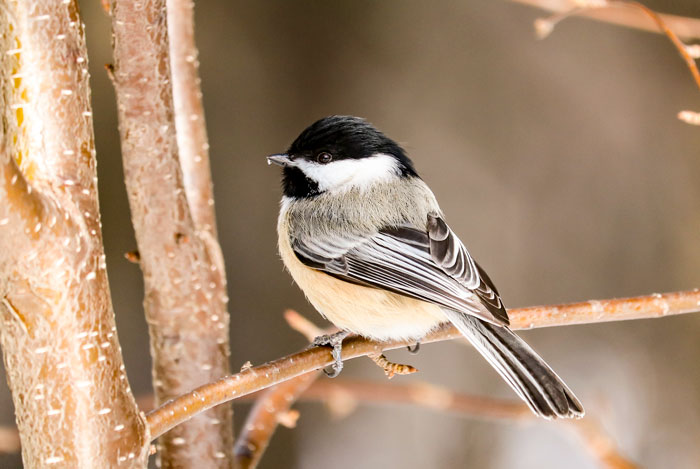
During the colder months, while observing these birds and their behavior, I will bundle up, gather all of my camera gear, and set out for a couple of hours or even longer. If I don’t have anywhere, in particular, to be or something to do, I will completely lose track of time and remain outdoors most of the day. I am currently shooting with a Canon Rebel T6i and a Canon 55-250mm lens. Due to the curious and cheerful nature of this bird, it isn’t very difficult to capture beautiful photographs. I believe they look especially majestic juxtaposed in scenes with snow, but I enjoy spending time with them overall, regardless of what time of year it is. While out in the field, I patiently wait for their arrival. I pick an area to sit and watch these birds and within a short amount of time, sometimes even minutes, I will hear them and anticipate their arrival. They arrive one by one, watching them displaying their acrobatic flying skills, while they seem to bounce easily from one branch to the next. I believe the chickadees fancy having their photographs taken during these sessions and almost seem to enjoy posing for the camera.

Black-capped chickadees are also a welcomed sight at my bird feeders. They will often take a black sunflower seed, one at a time, and fly away to stuff them into the crevice of tree bark, or eat elsewhere, only to start the whole cycle again. With their friendly nature, they can make a habit of investigating humans and everything else about their territory. I have had the pleasure of hand-feeding these birds close to my feeders as well as farther into the woods on my property. I have several black-capped chickadees that I have come to know during our hand-feeding sessions. Although these birds look very much alike, I have come to know the characteristics of some individuals and I look forward to our frequent interactions.
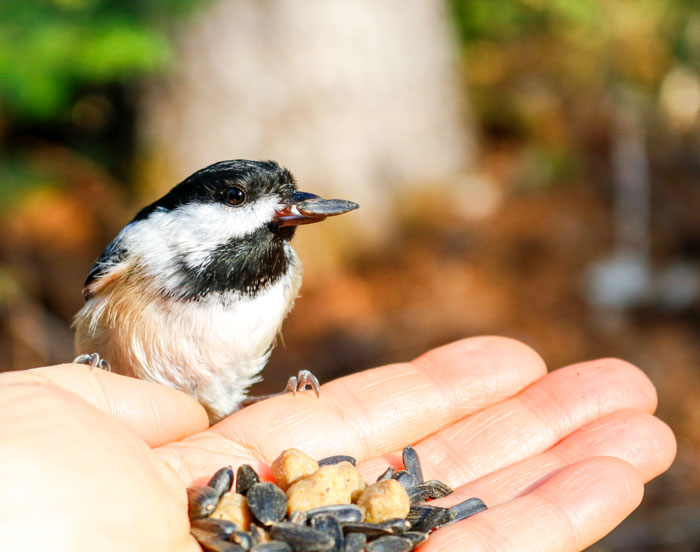
Whether I’m near my bird feeders or deeper in the woods, I look forward to my time spent with my black-capped chickadee visitors. I am both flattered and honored that they trust me enough to want to spend time with me. Black-capped chickadees are a complete joy to observe in their natural surroundings and as I mentioned, charming, delightful, and of course, quite photogenic.
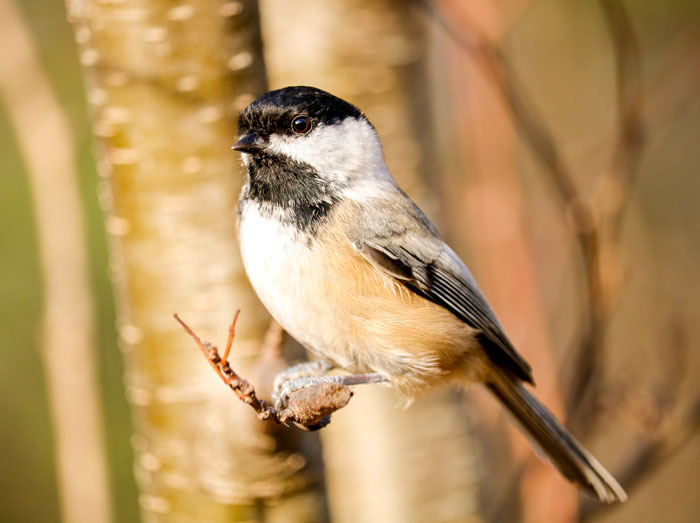
Leave a Reply